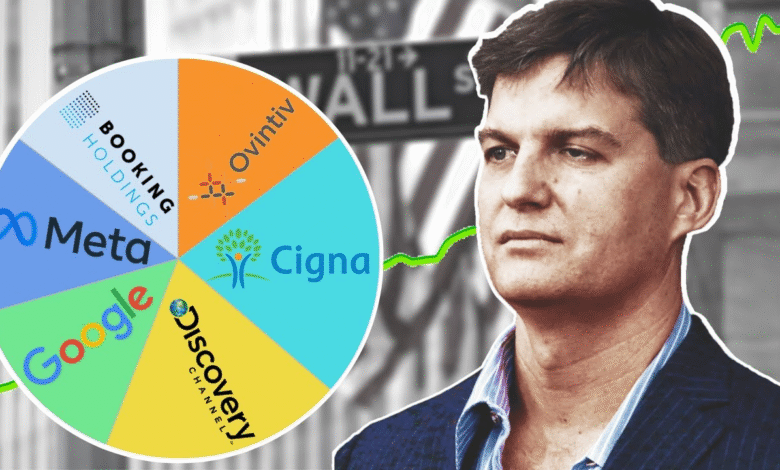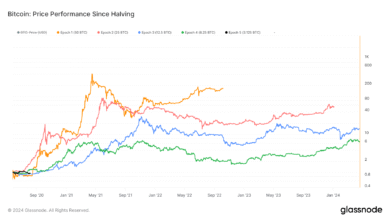Michael Burry Investment Strategy Amid Economic Uncertainty

Michael Burry’s investment strategy has always been a topic of fascination, especially since he famously predicted the subprime mortgage crisis in 2008. Recently, he made headlines by offloading a significant portion of his investments to focus exclusively on Estée Lauder, a bold move that suggests he foresees an economic downturn. This pivot is particularly interesting in light of the ‘lipstick index,’ which theorizes that cosmetic sales tend to rise during recessions as consumers opt for small luxuries instead of larger purchases. Furthermore, Burry’s investment in gold signifies a strategic shift towards financial stability amid increasing market volatility. As such, his approach provides valuable insights into navigating the complexities of today’s economy, highlighting trends that are crucial for investors to watch closely.
Michael Burry’s approach to investing often captures attention, especially as he pivots to capitalize on economic trends that many others overlook. His recent commitment to a single cosmetics brand, coupled with a significant investment in gold, signals a strategic response to impending financial challenges. By concentrating on Estée Lauder, he appears to align with the concept of the ‘lipstick index,’ which suggests that consumers turn to affordable luxuries in tough times. Additionally, Burry’s moves into traditional assets like gold reflect broader concerns about economic stability and market fluctuations. His investment decisions reveal a profound understanding of consumer behavior and market dynamics, making him a noteworthy figure in the discourse on smart investing.
The Lipstick Index: A Reflection of Consumer Behavior in Economic Downturns
The concept of the ‘lipstick index’ is not just a catchphrase; it epitomizes how consumer behavior shifts during periods of economic stress. History shows that when financial stability is threatened, consumers tend to prioritize small luxury purchases, such as cosmetics, instead of high-ticket items. This phenomenon is evident in the performance of companies like Estée Lauder during economic slowdowns, where makeup sales often rise as individuals seek affordable indulgences amid uncertainties. Michael Burry’s strategic pivot towards Estée Lauder may highlight this consumer sentiment, as he anticipates increased demand for beauty products in the face of rising inflation and recession fears.
Furthermore, the lipstick index also serves as a barometer for the overall economic climate. Analysts often recalculate their forecasts based on shifts in the beauty industry’s sales figures during recessions. Burry’s focus on Estée Lauder, which boasts a robust portfolio of brands, suggests he has a keen sense of market psychology. By investing heavily in this cosmetics stalwart, Burry is betting on a return to consumer willingness to splurge on makeup, echoing past trends where modest luxuries thrive even as belt-tightening becomes widespread.
Michael Burry’s Investment Strategy: A Bold Move Towards Estée Lauder
Michael Burry’s investment strategy is both audacious and revealing, particularly as he reallocates resources to Estée Lauder while moving away from tech-heavy portfolios. This strategic shift underscores his conviction that the market is adversely affected by overvaluation, which may lead to significant corrections in the technology sector. By concentrating on a single firm that operates within a traditionally recession-resistant industry, Burry demonstrates a calculated approach aimed at maximizing profit in declining market conditions. This unique focus on a cosmetics giant reflects his decision to sidestep the volatility associated with tech stocks and companies that may be affected by geopolitical tensions.
Additionally, this investment pivot reflects a deeper understanding of long-term economic patterns rather than short-term gains. Burry’s decisive action to invest heavily in Estée Lauder speaks volumes about his outlook on consumer spending habits during tough economic times. It aligns with the idea that, even amid downturns, consumers continue to purchase essential beauty products, thus providing a degree of financial stability that can be hard to find elsewhere. His strategy is certainly one to watch as it may set a precedent for other investors looking for safer avenues in turbulent markets.
Strategic Positions Against Technology Stocks: Burry’s Tactical Puts
In addition to focusing on Estée Lauder, Michael Burry’s decision to purchase puts on major tech companies signals a strategic caution within his investment framework. He anticipates potential downturns in the tech sector, particularly concerning giants like Nvidia and Alibaba. This inversion of expectations reflects a growing concern about overvaluation and the fragile state of the tech market, particularly as scrutiny around their earnings mounts. By betting against these companies, Burry is not merely speculating; he is aligning his portfolio with a defensive stance against what he perceives as an impending market correction.
Burry’s tactical positions serve a dual purpose: they safeguard his investments while providing a hedge against market volatility. The decision to short tech stocks may also be viewed as a response to ongoing global trade tensions and inflationary pressures that could further destabilize these high-growth sectors. Investors may find insights into Burry’s foresight and market-watching capabilities through these strategic decisions, as they may offer lessons in cautious investment during uncertain environments.
Gold Investment: A Safe Haven Amid Economic Uncertainty
Beyond cosmetics, Michael Burry’s allocation of $10 million into gold through the Sprott Physical Gold Trust extends the narrative of seeking safety amidst turmoil. Gold is historically viewed as a hedge against inflation and currency devaluation, providing a secure haven for investors when markets become too unpredictable. This investment aligns perfectly with Burry’s overall strategy of prioritizing resources that can withstand economic shocks, thereby enhancing the financial stability of his portfolio.
The recent surge in gold prices reflects broader market sentiments as investors flock to traditional assets amid fears of recession and economic decline. By incorporating gold into his investment portfolio, Burry is not just diversifying; he is also reinforcing the belief in slow but steady growth through tangible assets that retain value. His movements towards both Estée Lauder and gold indicate a well-rounded strategy aimed at navigating the steadfast complexities of the economic landscape.
Analyzing the Shift: From Technology to Cosmetics and Precious Metals
The shift from technology investments to consumer goods and gold is increasingly indicative of changing market conditions. Michael Burry’s actions reveal a deep analysis of economic fundamentals, suggesting that he believes the tech sector may be overextended in terms of valuation, while essential consumer goods and commodities like gold are more likely to yield resilience in times of trouble. This pivot underscores an emerging trend among savvy investors who are beginning to prioritizing stability over rapid growth, especially in volatile markets.
Moreover, the analysis of Burry’s shift poses important questions about the future of investment strategy in fluctuating economies. His confidence in Estée Lauder taps into historical precedents where we see essential products continuing to thrive despite external economic pressures. Similarly, gold’s longstanding reputation as a store of value will likely continue to reinforce the strategic decisions of investors like Burry moving forward, shaping the narrative for financial strategies in the coming months.
The Interplay of Economic Trends and Strategic Investments
Understanding the overarching economic trends can significantly influence investment decisions, as illustrated by Michael Burry’s recent investment strategy. The interplay between economic downturn predictions and tactical investments, such as those in Estée Lauder and precious metals, reflects a dedicated response to rapidly shifting market dynamics. By recognizing patterns in consumer behavior—like the lipstick index—in conjunction with the importance of traditional assets, Burry positions himself strategically against financial instability, demonstrating an adept grasp of market fundamentals.
This analysis brings to light an important dialogue around how investors, especially those with a reputation for foresight like Burry, can adapt their strategies. In a landscape riddled with uncertainty—including inflation fears and an unpredictable stock market—aligning investments with real-time economic indicators could become a vital approach for long-term financial success. The thoughtful nature of these investment decisions illustrates a shift more towards measurable stability, making Burry’s decisions worth noting in the context of broader investment strategies.
Consumer Psychology During Economic Recessions
Consumer psychology plays a pivotal role during economic downturns, impacting purchasing decisions significantly. The tendency for consumers to gravitate toward affordable luxuries like cosmetics, as highlighted by the lipstick index, reveals deeper behavioral economics at play. Michael Burry’s strategic investment in Estée Lauder taps into this phenomenon, indicating not just a belief in resilience for the cosmetics industry during recessions but also a thorough understanding of consumer sentiments. Such insights reflect an overarching trend where individuals prioritize self-care and personal grooming even as budgets tighten.
Analysts continue to explore how consumer behavior shifts during economic hardship, particularly concerning discretionary spending. The alignment of Burry’s investments with historical consumer patterns suggests he anticipates a considerable demand for beauty solutions despite economic hardship. For investors, understanding these behavioral shifts can enhance predictive capabilities regarding market movements, allowing for informed decisions that embrace the cyclical nature of retail trends amidst evolving economic landscapes.
Navigating Uncertainties: Burry’s Investments as a Model
In the face of emerging market uncertainties, Michael Burry’s investment strategy serves as a potential model for navigating turbulent waters. His dual investments in Estée Lauder and gold reflect a balanced approach to managing risk while seeking growth opportunities in traditional assets. As investors are increasingly drawn to strategies that emphasize financial stability amid fluctuations, Burry’s foresight and calculated shifts offer valuable lessons about portfolio diversification and adaptability.
Moreover, Burry’s nuanced understanding of the economic landscape allows him to make informed decisions that react to consumer trends and broader economic signals. As individuals and institutions face ongoing volatility, Burry’s investment choices underline the importance of maintaining a well-rounded portfolio that considers not just growth potential but also the capacity for resilience. His example encourages a proactive rather than reactive investment approach, challenging investors to align their strategies with evolving market realities.
The Future of Investment Strategies Post-Economic Downturn
As we look to the future, the lessons from Michael Burry’s investments could shape new paradigms in investment strategies post-economic downturn. The recognition of market volatility as a precursor to adjusting portfolio allocations emphasizes a need for forward-thinking strategies that can absorb shocks. Burry’s inclination towards consumer goods and gold may inspire future investors to consider a diversified mix of asset classes that include both traditional and alternative investments.
Furthermore, the ongoing evolution of economic indicators—such as consumer spending trends articulated in the lipstick index—will undoubtedly influence investor decisions for the foreseeable future. As financial landscapes continue to shift in response to global pressures and local economies, investors would benefit from following Burry’s lead in incorporating a variety of safe-haven assets into their strategies. The adaptability and foresight shown by Burry could become the trademarks of successful investment narratives in a post-recession world.
Frequently Asked Questions
How does Michael Burry’s investment strategy reflect the concept of the lipstick index during an economic downturn?
Michael Burry’s investment strategy, particularly his significant stake in Estée Lauder, illustrates the lipstick index concept, which suggests that consumers gravitate towards affordable luxuries like makeup in economic downturns. By focusing on Estée Lauder, Burry anticipates that makeup sales will thrive as consumers seek small indulgences when facing tighter budgets.
What is the significance of Michael Burry’s focus on Estée Lauder in his investment strategy?
By concentrating on Estée Lauder, Michael Burry signals confidence in the cosmetics sector’s resilience during potential economic downturns. This decision aligns with his broader investment strategy, which capitalizes on consumer behaviors—such as the lipstick index—indicating that even in tough times, demand for cosmetics may remain strong.
What role does gold investment play in Michael Burry’s overall strategy during periods of financial instability?
Michael Burry’s $10 million investment in gold through the Sprott Physical Gold Trust highlights his strategy of seeking safety amid financial instability. As gold often acts as a hedge against inflation and currency devaluation, this move reflects a broader trend where Burry reallocates assets towards traditional investments that promise stability during economic uncertainty.
Can we expect Michael Burry’s investment strategy to influence future trends in the cosmetics market, particularly for Estée Lauder?
Given Michael Burry’s prominence and his bullish investment in Estée Lauder, his strategy may positively influence trends in the cosmetics market. Market watchers will likely take note of his insights, especially regarding the lipstick index, and this could lead to increased interest and investment in similar sectors during economic downturns.
How does Michael Burry’s selling of tech stocks align with his investment strategy?
Michael Burry’s decision to sell off tech stocks, while focusing on Estée Lauder, reflects his cautious investment strategy amid concerns over inflated market valuations and potential economic downturns. His puts on major tech firms indicate a critical stance towards their growth prospects, suggesting a pivot towards more stable sectors like cosmetics and gold.
What implications does Michael Burry’s investment strategy have for investors during an economic downturn?
Michael Burry’s investment strategy, particularly in Estée Lauder and gold, offers a blueprint for investors navigating economic downturns. By highlighting the lipstick index and reallocating towards more stable assets, Burry suggests that focusing on consumer behavior and traditional value-driven assets may yield better security and growth during financial instability.
| Key Point | Details |
|---|---|
| Investment Shift | Michael Burry sold most holdings to focus on Estée Lauder, indicating a strategy anticipating a recession. |
| Lipstick Index | Burry’s choice aligns with the theory that cosmetics sales rise during economic downturns. |
| Technology Stocks Strategy | He took puts on companies like Nvidia and Alibaba, indicating skepticism towards their future earnings. |
| Investment in Gold | Allocated $10 million into gold investments; reflects concerns over inflation and currency devaluation. |
| Market Positioning | Burry’s investments show a complex strategy aiming for stability amidst increasing market tensions. |
Summary
Michael Burry’s investment strategy has captivated attention as he pivots his focus towards Estée Lauder amid recession fears. By selling off significant holdings and betting on the ‘lipstick index’, Burry’s approach indicates a calculated move towards sectors he deems resilient during economic downturns. His investments in gold further underscore his commitment to traditional assets in an unstable market. Overall, Burry’s selective strategy reveals his deep understanding of market dynamics and his ability to anticipate shifts in investor sentiment.




